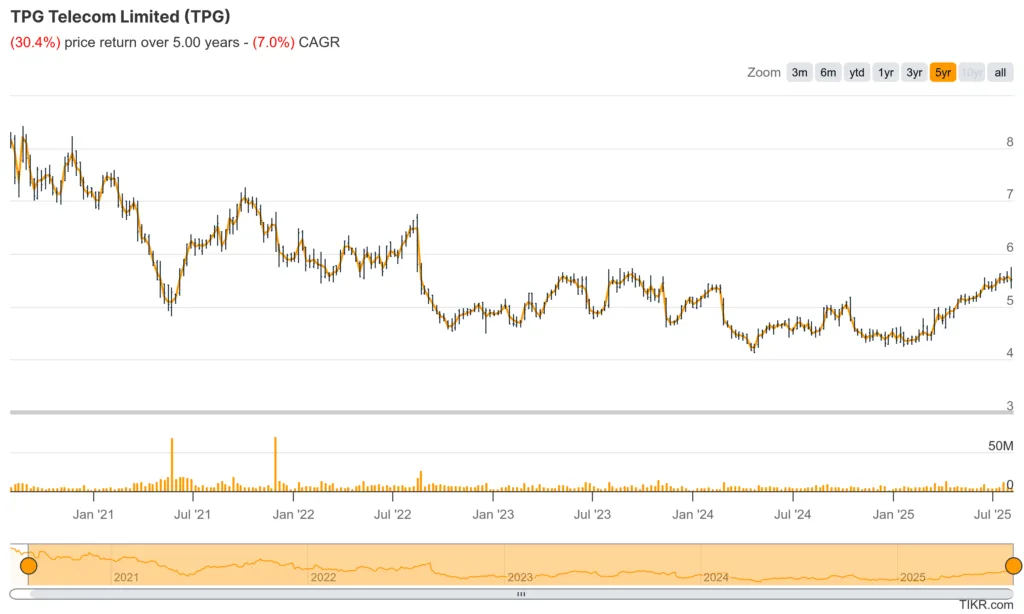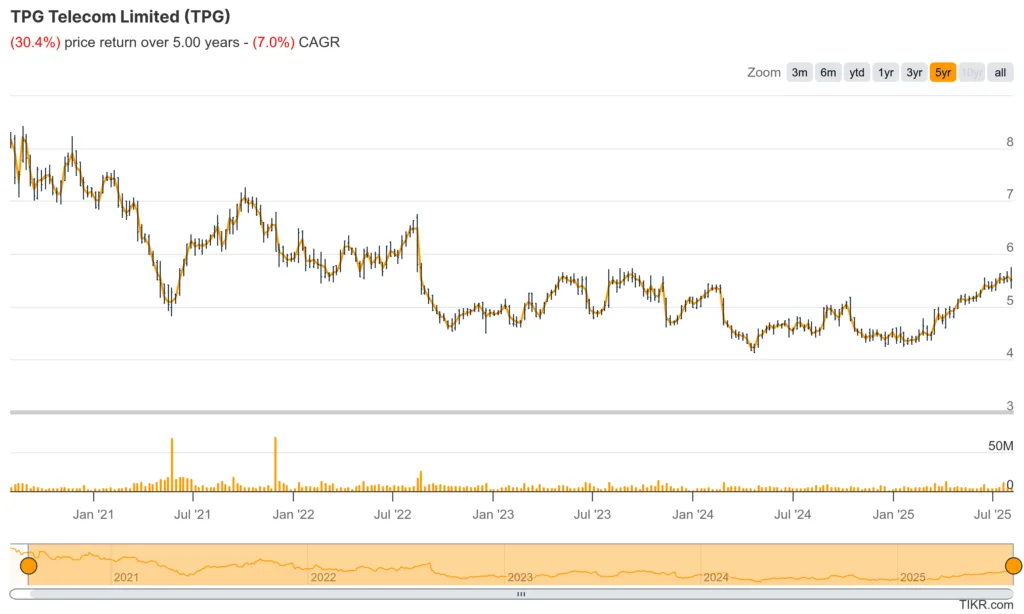UK investor Chris Hohn once said he doesn’t want to own businesses with no competition — he wants to own ones with weak competition. That sentiment could be applied to TPG Telecom Ltd (ASX: TPG) over recent years but is the tide finally starting to turn? With a capital return and an increase in TPG’s free float, it just might be.
After years of looking unfocused, TPG appears to be regaining its edge. Following the recent sale of its subscale fibre and enterprise business to Vocus for $5.25 billion, the telco has emerged as a leaner, more mobile-centric operator. It’s not the TPG of old. It’s arguably better.

CEO Iñaki Berroeta described the move as creating a “simpler, more capital-efficient business” — and the numbers support that. Around $2.4 billion in debt is being paid down, and the dividend remains steady at 18 cents, with a promise to grow it over time. Importantly, free cash flow is improving sharply, helped by lower capex, reduced financing costs and a pause in spectrum payments.
The sale gives TPG long-term access to fibre without the burden of reinvestment — locking in favourable economics while freeing up capital. This shift is more than financial housekeeping. It’s a strategic reset.
The company’s mobile network now covers over 98% of the population thanks to its infrastructure-sharing agreement with Optus. Market share in regional areas is up, port-ins are rising, and average revenue per user (ARPU) is improving. The telco has also cleaned up its brand portfolio and rationalised thousands of legacy plans.
It’s too early to call a full turnaround, but there’s a sense that TPG has found its identity again: a cost-conscious mobile challenger with growing relevance.
With greater coverage and households still under strain from the cost of living, surely now is the time for TPG’s low-cost offer to gain traction.
It’s not just a re-focusing taking place, TPG is also playing the passive investing game.
Increasing free float and playing the index game
Companies are all too aware of the benefit of index inclusion, inviting the passive giants to buy up shares. A part of this strategic reset is the capital return to shareholders and the reinvestment plan for minority shareholders.
Why would you return cash and then raise more?
The reinvestment will be focused on minority shareholders, increasing TPG’s free float.
Free float refers to the portion of a company’s shares that are available for trading on the open market — that is, shares not held by insiders, strategic investors, or government entities. In TPG’s case, around 77% of shares are tightly held by four strategic investors. That leaves only 23% “floating” — available for institutions and retail investors to buy and sell freely
Most major stock indices — including the S&P/ASX 200 — use free float-adjusted market capitalisation to determine both eligibility for inclusion, and the weight of the stock in the index once included.
This means companies with low free float get a lower index weighting, even if their total market cap is large. If a stock is too tightly held and rarely trades, index providers may limit its inclusion or cap its weighting to reduce risks for passive investors.
In TPG’s case it has a market cap of over $10 billion. But with a free float of only 23%, its effective float-adjusted market cap is just ~$2.3 billion. That limits both how much of the index it can represent, and how much money passive and index-aware funds can allocate to it.
By increasing its free float to 30%, TPG increases its weighting in the ASX 200, making it more meaningful in index funds. This attracts more flows from ETFs, super funds, and passive managers, who often buy stocks in proportion to their index weight.
US markets overnight
A tame affair overnight in the US after a few days of solid returns. It was also relatively quiet from the Trump administration as well…is there a golf tournament on somewhere?
- S&P 500 = -0.45%
- Nasdaq = -0.60%
- Aussie dollar up 0.2% to 64.68 US cents
- Iron up 0.8% to $102.30 US a tonne
If you would like more insight from myself and the Rask team jump across to Rask Core. Rask Core is where you will find more of my write ups and our ETF model portfolios. Rask Core is our “do it with me” service. You can control your own investments but do so with confidence as you see the exact holdings and percentages. Check it out here.
